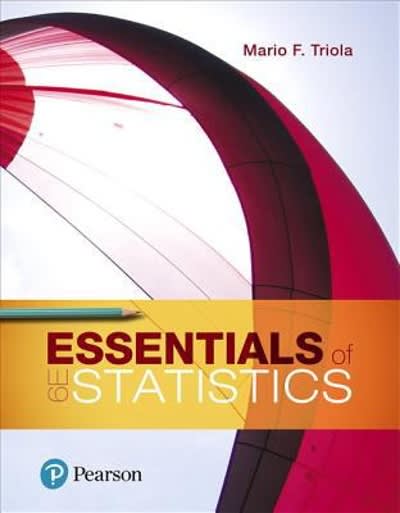1. Out-of-class activity Divide into groups of three or four and create a new carnival game. Determine...
Question:
1. Out-of-class activity Divide into groups of three or four and create a new carnival game. Determine the probability of winning. Determine how much money the operator of the game can expect to gain each time the game is played.
2. In-class activity Divide into groups of three or four and use coin flipping to develop a simulation that emulates the kingdom that abides by this decree: After a mother gives birth to a son, she will not have any other children. If this decree is followed, does the proportion of girls increase?
3. In-class activity Divide into groups of three or four and use actual thumbtacks or Hershey’s Kisses candies or paper cups to estimate the probability that when dropped, they will land with the point (or open side) up. How many trials are necessary to get a result that appears to be reasonably accurate when rounded to the first decimal place?
4. Out-of-class activity Marine biologists often use the capture-recapture method as a way to estimate the size of a population, such as the number of fish in a lake. This method involves capturing a sample from the population, tagging each member in the sample, then returning it to the population. A second sample is later captured, and the tagged members are counted along with the total size of this second sample. The results can be used to estimate the size of the population. Instead of capturing real fish, simulate the procedure using some uniform collection of items such as colored beads, M&Ms, or index cards. Start with a large collection of at least 200 of such items. Collect a sample of 50 and use a marker to “tag” each one. Replace the tagged items, mix the whole population, then select a second sample and proceed to estimate the population size. Compare the result to the actual population size obtained by counting all of the items.
5. Out-of-class activity Divide into groups of three or four. First, use subjective estimates for the probability of randomly selecting a car and getting each of these car colors: black, white, blue, red, silver, other. Then design a sampling plan for obtaining car colors through observation. Execute the sampling plan and obtain revised probabilities based on the observed results. Write a brief report of the results.
6. In-class activity The manufacturing process for a new computer integrated circuit has a yield of 1/6, meaning that 1/6 of the circuits are good and the other 5>6 are defective. Use a die to simulate this manufacturing process, and consider an outcome of 1 to be a good integrated circuit, while outcomes of 2, 3, 4, 5, or 6 represent defective integrated circuits. Find the mean number of circuits that must be manufactured to get one that is good.
7. In-class activity The Monty Hall problem is based on the old television game show Let’s Make a Deal, hosted by Monty Hall. Suppose you are a contestant who has selected one of three doors after being told that two of them conceal nothing, but that a new red Corvette is behind one of the three. Next, the host opens one of the doors you didn’t select and shows that there is nothing behind it. He then offers you the choice of sticking with your first selection or switching to the other unopened door. Should you stick with your first choice or should you switch? Divide into groups of two and simulate this game to determine whether you should stick or switch. (According to Chance magazine, business schools at institutions such as Harvard and Stanford used this problem to help students deal with decision making.)
8. Out-of-class activity In Cumulative Review Exercise 4, it was noted that eye colors in the United States are distributed as follows: 40% brown, 35% blue, 12% green, 7% gray, 6% hazel. That distribution can form the basis for probabilities. Conduct a survey by asking fellow students to identify the color of their eyes. Does the probability of 0.4 for brown eyes appear to be consistent with your results? Why would a large sample be required to confirm that P(hazel eyes) = 0.06?
Step by Step Answer:






